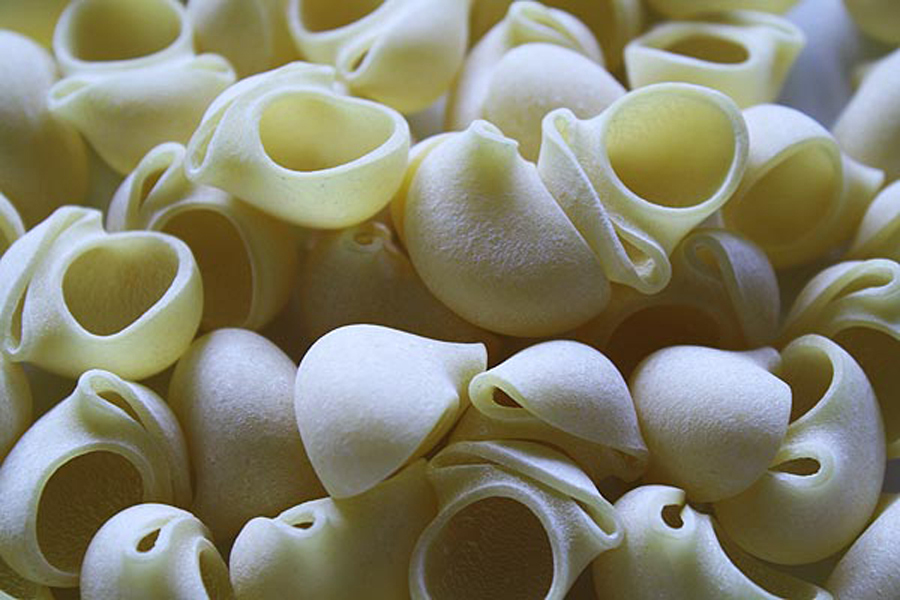Other Names:Chiocciole |
Region:Throughout Italy |
Made with:Flour, water, and salt. |
About:Lumache and Lumachine are two names for the same type of pasta – small, land snail-shaped shells (Lumache translates to “snails” in Italian). Lumache is so popular that they are manufactured from the smallest suitable for soups and stews to so large (Lumaconi), they can be stuffed with different hearty fillings. The exact origin of Lumache pasta is unknown, but it’s believed to have emerged sometime around the 17th or 18th century in Southern Italy. Lumache quickly gained popularity throughout Italy due to its versatility and ability to hold sauces well. Lumache is a type of “pastasciutta” (dry pasta) is boiled and then tossed in a variety of sauce. They can also be baked in casseroles or served in pasta salads. Marinara, ragù, puttanesca Due to their cupped shape, Lumache are excellent at capturing and holding onto chunky sauces, vegetables, and bits of meat or seafood. Here are some additional points to note: Lumachine is simply the diminutive form of Lumache, meaning “little snails”. They are a slightly smaller version of the same pasta shape. You might also encounter the term “Chiocciole” (little snails) used interchangeably with Lumache Regionally the basic shape consistent, there can be slight variations in size and thickness depending on the region in Italy. For example, some areas might have a plumper Lumache, while others might have a thinner, more delicate version. Lumache was handmade. Today, most commercially available Lumache are produced with pasta machines. However, there are still some regions and artisan producers who continue to make them by hand. Lumache-shaped pasta has found fans beyond Italy. You might find similar shapes under different names in other cuisines, like “Escargot” pasta in France or “Caracoles” in Overall, Lumache and Lumachine offer a delightful combination of fun shape, versatility, and deliciousness. They’re a great way to add a touch of whimsy and tradition to your pasta dishes. |
||
Source:
|
Photo Credit: |
